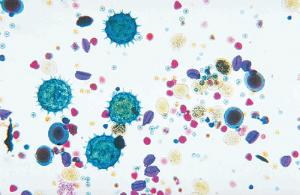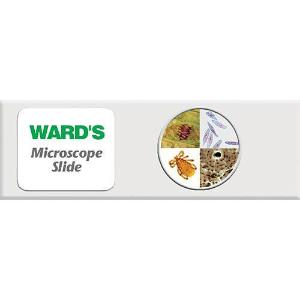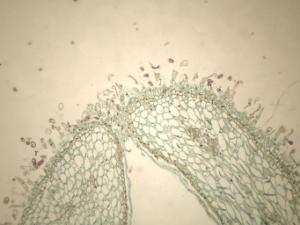Get the buzz on pollination; Plus a free student handout from AccessScience
Teach students about the busy world of bees, butterflies, and other animals that do the vital work of moving pollen around with this free resource from McGraw Hill’s Access Science.
Access to this content is available to Ward's World readers for free from McGraw Hill's AccessScience, an award-winning, digital STEM resource containing exclusive articles written by expert scientists and engineers; biographies of well-known scientific figures; science news, videos, and animations; and much, much more.
Instructors can use AccessScience to guide students on their research project journeys, to help students understand scientific concepts, to support distance learning efforts, in flipped classroom approaches, and in countless other ways.
Ward’s World and AccessScience have partnered to offer educators a no-obligation, free trial subscription to AccessScience. Request your free trial today to discover how valuable AccessScience can be for you and your students! Get your free trial now.
Middle/High School
In its simplest terms, pollination is the act of transferring pollen grains from the male anther of a flower to the female stigma, i.e., fertilization. It’s a demonstration of “the birds and the bees and the flowers and the trees” working in perfect harmony to complete the circle of life.
Without hesitation, your students will be attracted to lessons on pollination. Your classroom will be all abuzz once they discover that:
- animals pollinate more than 75% of the 1,300 types of plants grown worldwide for food, medicines, & fabric; 1
- more than one out of three bites of food we eat or beverages we drink are a direct result of pollination; indirectly, pollination plays a role in most of what we eat and consume.
Yes, at first, students may assume you’ll simply drone on and on about the critical role bees play in pollination. And while bees ARE the bomb, other creatures such as butterflies, moths, birds, bats, beetles, ants, and even small animals also do their fair share to support pollination.
Fun fact:
The black-and-white ruffed lemur is the largest pollinator in the world!
Now, if you really want to drop the mic after your lesson, explain to your class how electromagnetic forces (EMFs), i.e., biomagnetism plays a role in pollination. There are two ways this is shown:
-
By plants. Studies suggest that biomagnetism emanates from selective flower parts and in the presence of iron deposits in the antenna and joints of ant pollinators during the plant’s reproductive cycle.2 The researchers believe that biomagnetism plays a signaling role in the attraction between flowers and pollinators.
- By pollinators. Honeybees and some other pollinators have a magnetoreception sense similar to fish, whales, and dolphins.3 That’s the sense birds and butterflies use to help them stay oriented during migrations. It’s another one of their many superpowers! With their magnetoreception, these amazing creatures can perceive the Earth's magnetic field (MF), helping them navigate the route between the plants and their hive
Bam! Mic drop.
Did you know? Researchers are investigating whether the honeybee's compass abilities could suffer from the “radio frequency (RF) smog” produced by modern civilization4 (e.g., wireless technology such as cell phones, cell phone towers, Wi-Fi, and wireless water meters).
Students are naturally drawn to the busy world of bees, butterflies, and other animals that do the vital work of moving pollen around. Encourage their natural passion for this concept with your lesson plans.
Download McGraw Hill's AccessScience article on Pollination to share with your students; you can spread these scientific facts from student to student, year after year. The free download also includes assessment questions and answers you can use to test student understanding. It's a valuable resource that will help students' interest in science blossom.
Download McGraw Hill's AccessScience Teacher Answer key for this article here.
References: 1. Growing a Greener World. The importance of pollinators. 2. Agricultural and Biological Sciences Journal Vol. 2, No. 1, 2016, pp. 10-14 3. Thomas E Ferrari (2014) Magnets, magnetic field fluctuations, and geomagnetic disturbances impair the homing ability of honey bees (Apismellifera), Journal of Apicultural 4. Válková T, Vácha M. How do honeybees use their magnetic compass? Bull Entomol Res. 2012 Aug.
Recommended products:
[StartProductBlock]

Mixed Pollen, 16 Types Slide
Observe the many diverse pollen types. Identifying features are clearly distinguishable. Rigorous quality control standards.
[EndProductBlock]
[StartProductBlock]

Lily Anther, Pollen Tetrads Slide
Angiosperm Reproduction. Identifying features are clearly distinguishable. Rigorous quality control standards. Immature pollen grains.
[EndProductBlock]
[StartProductBlock]

Lilium Style, Germinating Pollen Slide
Angiosperm reproduction. Identifying features are clearly distinguishable. Rigorous quality control standards. Style with pollen tubes and germinating pollen.
[EndProductBlock]
[StartProductBlock]
Science Take-Out® Is Climate Change Making Us Sick?
Students conduct simulated antibody tests to determine tree pollen allergies. They graph and analyze data to determine the correlation between temperature, pollen counts, and allergic symptoms.
[EndProductBlock]
